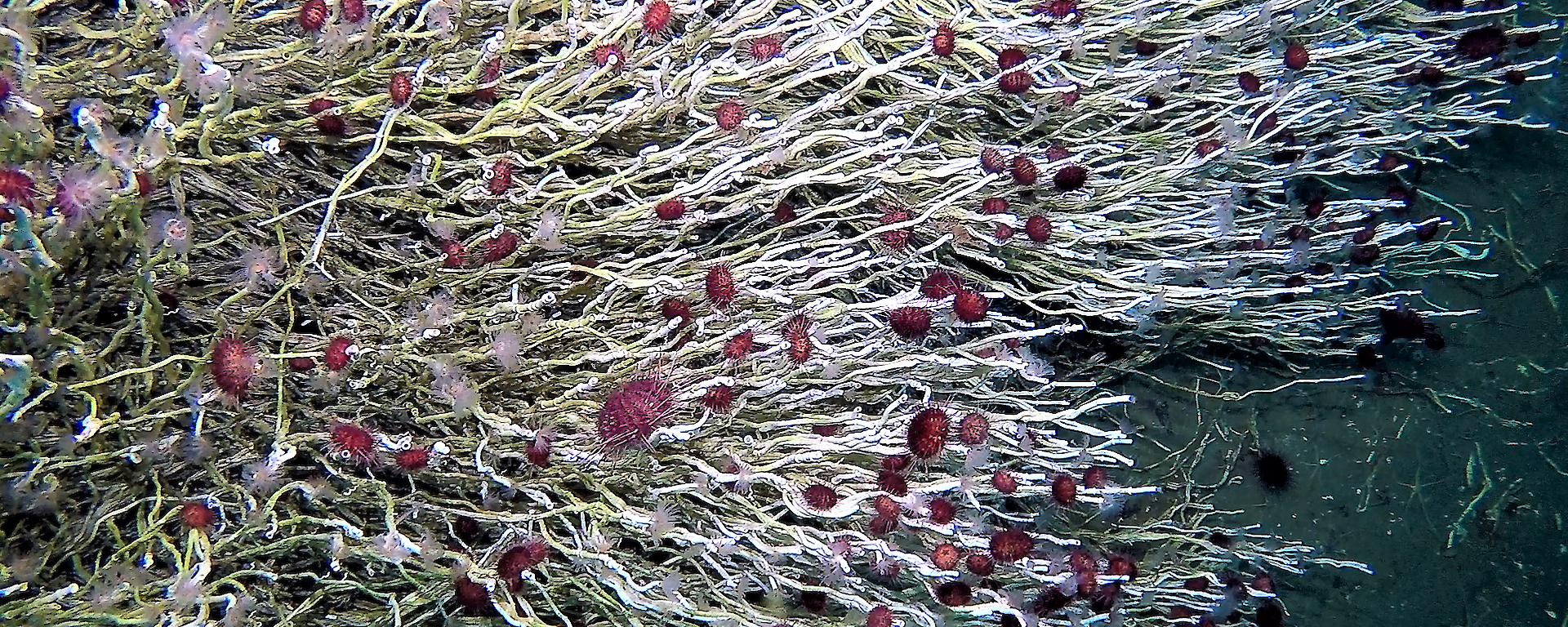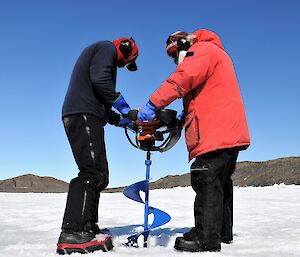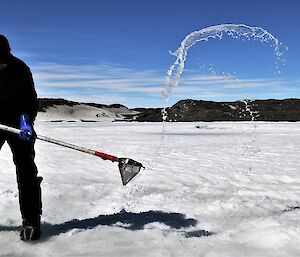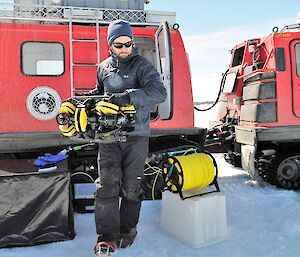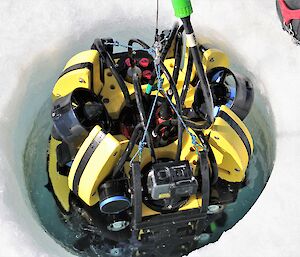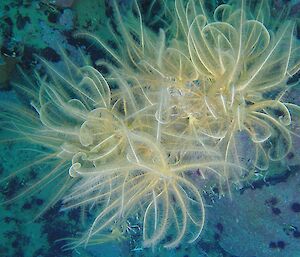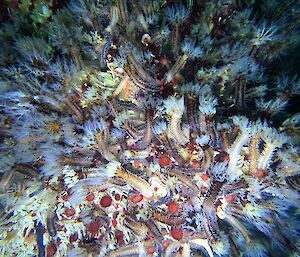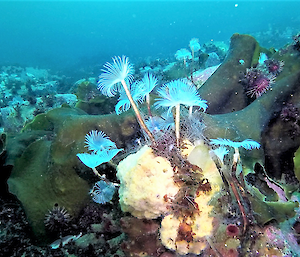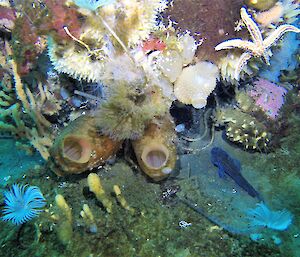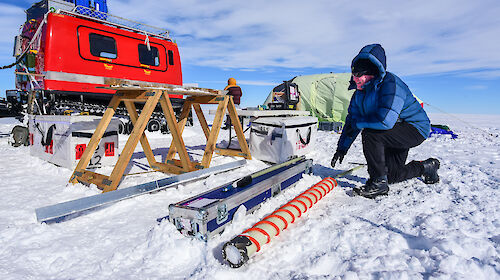Marine biologists are flying a bespoke mini-submarine under the sea ice to explore environments around Davis research station that have never been seen before.
In the frozen fjords of Vestfold Hills, Dr Jonny Stark and Dr Glenn Johnstone are surveying benthic (bottom-dwelling) life as part of the environmental assessments for the proposed Davis aerodrome.
The Australian Antarctic Division scientists are visiting up to 30 sites to deploy the 35 centimetre wide Remotely Operated Vehicle (ROV) that carries three cameras.
“One of the most exciting aspects that we’re drilling holes through more than a metre of sea ice, popping this thing through, and we just don’t know what we're going to find,” said Dr Johnstone just before deploying the ROV into Long Fjord, north of Davis research station.
The study is trialling systematic ways to survey the sea floor with cameras and develop methodologies for a long-term monitoring program.
“We also want to investigate suitable sites that we could survey routinely if the proposed aerodrome goes ahead,” said Dr Stark.
“It’s important to know what’s here and its status, for example, we just don’t know if most of the life on the sea-floor is threatened, vulnerable, rare or unique, or is it pretty common? We have no idea about those kinds of questions.”
Work in the 1980s along one of the fjords found extensive polychaete (tubeworm) reefs stretching up to eight kilometres in length.
“The worm reefs are made of tubes of calcium carbonate, the same material that coral reefs are made out of,” Dr Stark said.
“We have reconfirmed that those reefs are still there. These preliminary surveys have indicated they look pretty healthy. They stretch from the surface down to 30 metres, much like coral does really.”
Dr Johnstone said that the types of organisms living on the seafloor — such as crustaceans, sea squirts, sponges, starfish, and sea urchins — are similar to those on reefs in Tasmania or Southern Australia.
“However, they occur here as different species in different communities. All of the organisms here are endemic to Antarctica.”
The surveys are finding a diversity of habitats with high variation across small areas, depending on currents, slope of the seafloor, and thickness of sea ice.
“When I was a kid I always wanted to be an explorer, and here I am, exploring an unknown environment,” said Dr Stark.
“The fjords, particularly around Davis, are extensive biodiversity hotspots and we know barely anything about them.”
The Davis aerodrome project is required to undergo environmental assessments under the Antarctic Treaty (Environment Protection) Act 1980 (ATEP Act) and the Environment Protection and Biodiversity Conservation Act 1999 (EPBC Act). Public comment is currently open until 26 February 2020 and can be made via the Regulator’s website.

